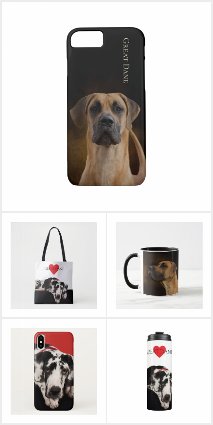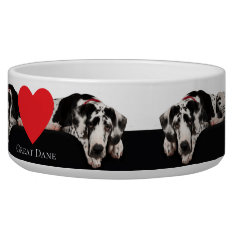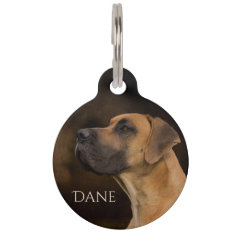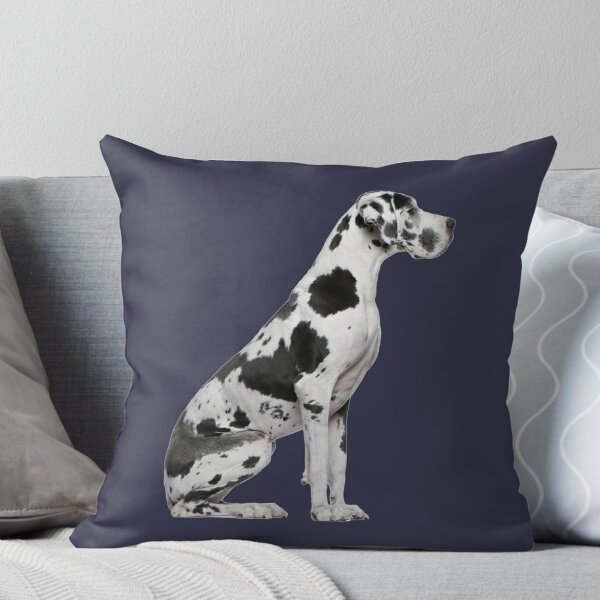Breed Type
Utility / Working /Non-Sporting
History
The Great Dane has nothing to do with Denmark! It was developed primarily in Germany to hunt boar from Greyhound and Mastiff breeds. It was declared the national breed of Germany in 1876. The original boarhound was very different in temperament and physical build to the Dane that has been developed as a pet in modern times. The Great Dane's alternative title is commonly ‘Gentle Giant'.
Description
The overall appearance of the Dane is that of a giant powerful dog but with a sleek and elegant build.
It has a long narrow head (more rounded than a Greyhound) balanced on a elegant yet muscular neck. Its front legs are perfectly straight while the hind legs have muscular thighs. The tail is medium-length and the ear are either cropped (long, pointed and carried erect) or left natural (lying against the sides of the head with a slight rise where the ear meets the base of the skull). Its eyes are round and usually dark - with a lively intelligent expression. All Danes have short, thick, shiny, close-fitting hair. The colour of the coat may be fawn, brindle, black, blue, mantle harlequin and sometimes Merle.
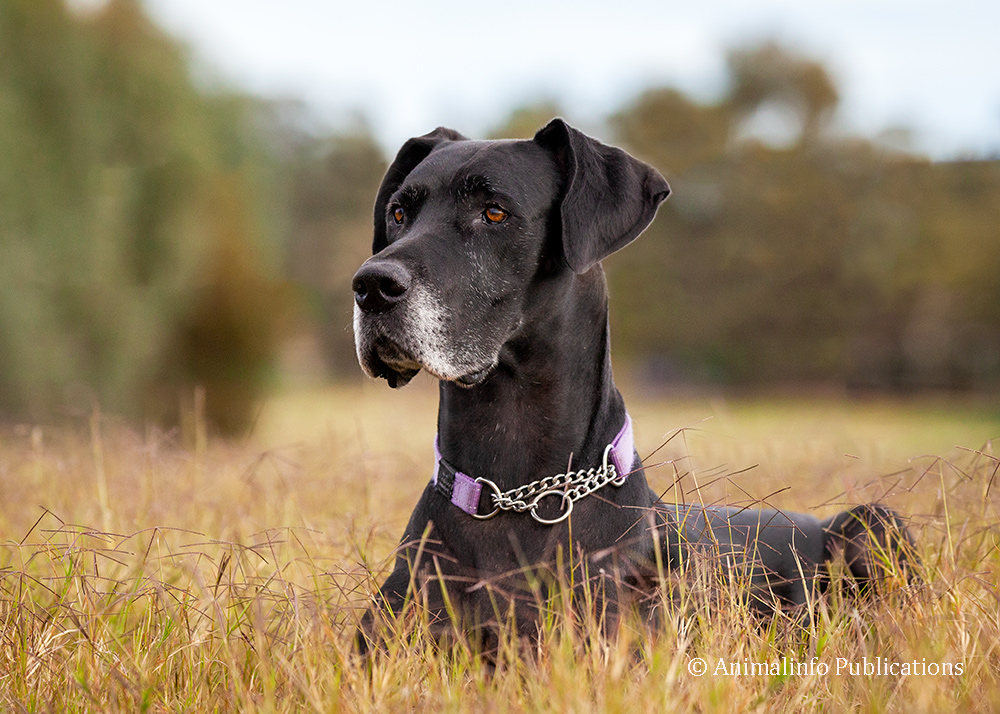
Size
Minimum height of an adult dog over eighteen months: 76 cms (30 ins); bitches: 71 cms (28 ins).
Weight, minimum weight over eighteen months: dogs: 54 kgs (120 lbs); bitches: 46 kgs (100 lbs). A Dane is not fully mature until about 3 years of age.
Coat
The smooth short-haired coat is easy to groom and the breed is an average shedder.
Temperament
The Great Dane truly is a gentle giant. Dignified and affectionate, yet playful and patient with children. The Dane is a very social breed and needs to be around people. The Great Dane does not bark much and only becomes aggressive when the circumstances require it. It is a steady dog(once past adolescence!) and is brave and loyal. It can be a good watchdog. Some individuals are dog-aggressive, especially with same sex dogs. It is good with other pets if it is raised with them from puppyhood.
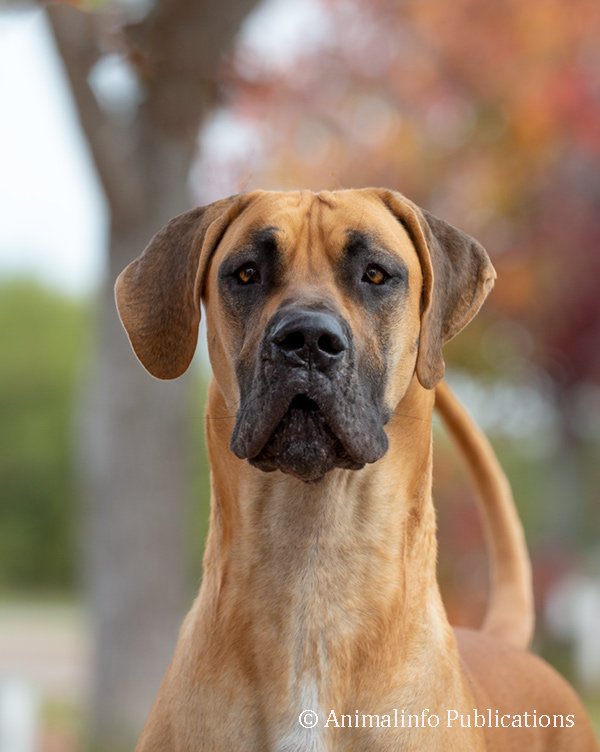
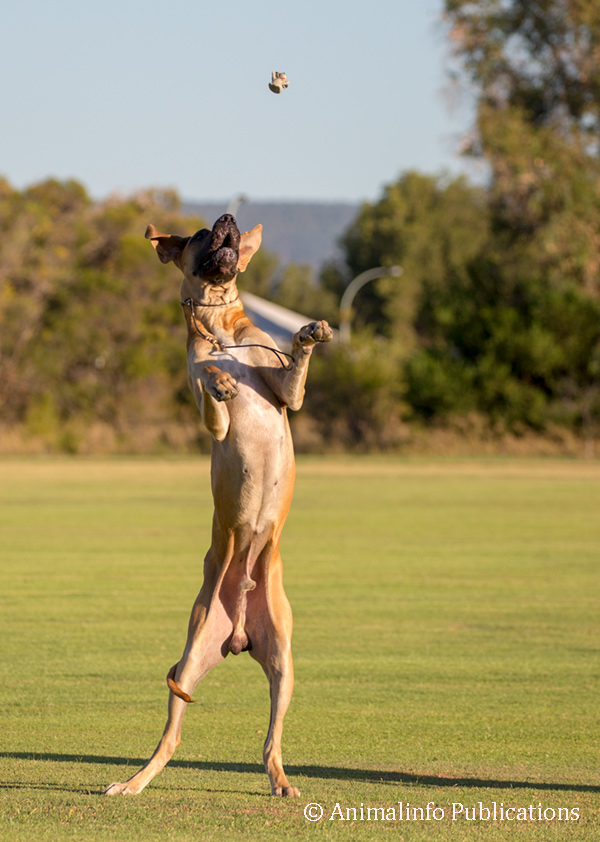
Longevity
The average is under 10 years, however some can live to be 12-13 years old.
Health
It is vital that the Dane's exercise level is kept at a moderate level - especially when they are puppies as they have an exceptional growth rate and can be prone to many developmental bone and joint problems. The level of protein, calcium and other supplements in their diet when growing must also be carefully monitored. A reputable breeder will give you an exercise and feeding program to ensure your Dane puppy develops as it should.
Being a large breed, deep-chested dog, they are also prone to developing bloat or gastric dilation volvulus. You should be aware of the warning signs of this condition as it is critical to get emergency treatment by a veterinarian as quickly as possible.
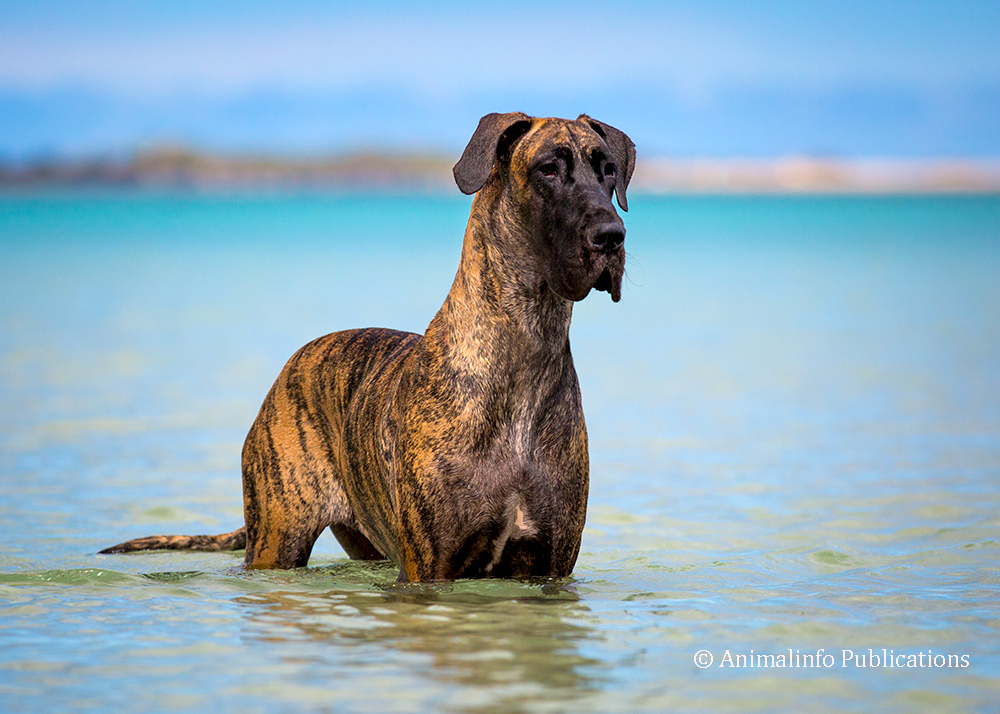
Possible Genetic Disorders
Great Danes are prone to hip dysplasia - you should ensure the parents of your puppy have had a reputable hip evaluation. They can also be prone to some tumours and heart disease.
Best Suited
- This dog is a giant breed that will cause havoc in the house and home if not well trained. You must make a commitment to regular training at least for the first 3 years of life!
- For families where someone is home for much of the time.
Worst Suited
- To those with an aversion to slobber! Great Danes drool....
- To cold climates (Danes are very sensitive to the cold). You must be prepared to keep your dog inside during cold winters.
- To those on a limited budget



